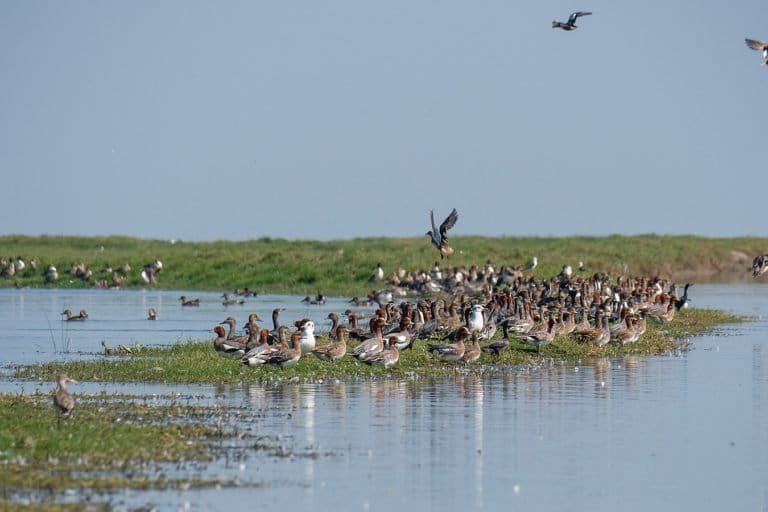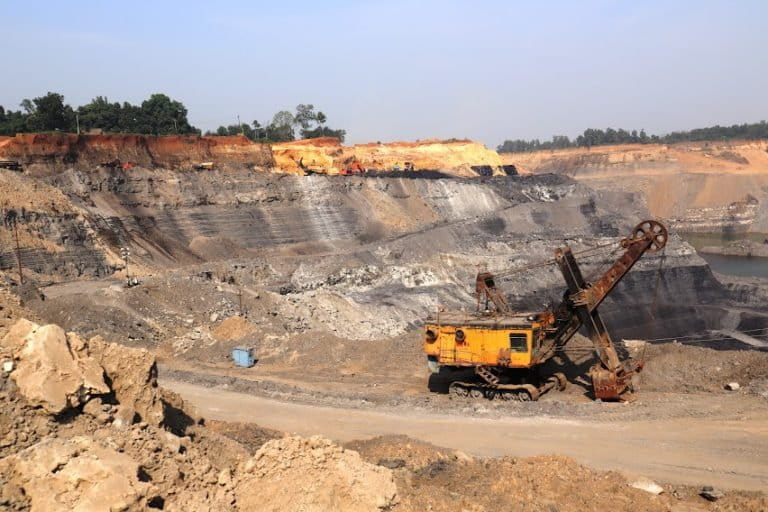- The Supreme Court, recently, directed that every national park and wildlife sanctuary in the country will have a mandatory eco-sensitive zone (ESZ) of at least one kilometre starting from its demarcated boundaries.
- This decision can be viewed as a positive step towards forest conservation in India, albeit with the amendments and inclusions that are being discussed, writes the author of this commentary.
- Large-scale mining harms biodiversity directly or indirectly, but, in such a scenario, the introduction of the recent judgement works as a relief that will somehow reduce the pressure on associated flora and fauna.
India has a countrywide network of protected areas (PAs), including wildlife sanctuaries, national parks and tiger reserves. Owing to the pressures of human habitation and infrastructure development projects, the eco-sensitive zones (ESZs) around such protected areas are shrinking and, in some cases, are near zero or absent.
The Supreme Court, on June 3, 2022, directed that every national park and wildlife sanctuary in the country will have a mandatory eco-sensitive zone (ESZ) of at least one kilometre starting from its demarcated boundaries. The decision was made in response to a petition to protect forest lands in Tamil Nadu’s Nilgiris district. This decision nullifies the area-specific ESZ boundary limit around the PAs, as previously announced by the Supreme Court and would apply in all states/UTs where the minimum extent of ESZ is not prescribed. Due to ideological differences between states and the Central and state governments, India did not have a mandatory rule on maintaining the ESZ around its protected area until now. The subject “forest” for which such regulation is prescribed is kept in the concurrent list of the Indian constitution, on which both the state and central governments can make decisions.
Some states clarified that such notification did not favour local communities inhabiting the forest boundary. Others opposed it because activities such as mining and quarrying contribute significantly to the state economy. Finally, the Supreme Court stepped in, concluding that while development is necessary, it should not be done at the expense of forest degradation. Thus, it can be understood that the recent judgments were not made in haste but rather based on several facts and conclusions.
It is said that knowing the past helps one better understand the present. The recent judgement also has a historical foundation on which the current pillar in the form of a final rule is built.
Chronology of the present judgement on SEZ
During the XII meeting of the Indian Board for Wildlife on January 21, 2002, a Wildlife Conservation Strategy-2002 was adopted, which stated that “lands falling within 10 kilometres of the boundaries of National Parks and Sanctuaries should be notified as eco-fragile zones under section 3 (v) of the Environment Protection Act and Rule 5 of the Environment (Protection) Rules. Subsequently, the Additional Director General of Forest (Wildlife), in a letter dated February 6, 2002, requested that all Chief Wildlife Wardens will identify such areas within 10 kilometres of the boundaries of National Parks and Sanctuaries and will submit detailed proposals for their designation as eco-sensitive areas under the Environment Protection Act, 1986.

In response to the aforementioned decision, some state governments expressed concern about the applicability of the 10 km range from the protected area boundary, stating that most human habitation and other areas, including important cities, in these states would fall under the purview of the eco-sensitive zone, negatively impacting the environment. Taking into account the constraints communicated by the states, the proposal was re-examined by the National Board for Wildlife at its second meeting on March 17, 2005, and it was decided that the delineation of eco-sensitive zones would have to be site-specific and relate to regulation, rather than prohibition, of specific activities. By letter dated May 27, 2005, the decision was communicated to all state governments for compliance. It was then communicated further with subsequent reminders.
The Goa Foundation also filed public interest litigation before the Supreme Court regarding the declaration of eco-sensitive zones. In turn, the Supreme Court, in an order dated December 4, 2006, directed the Ministry of Environment and Forests to provide all states/UTs with a final opportunity to respond to the May 27 and that state governments submit their proposals to the Ministry within four weeks. It was also directed that all cases where environmental clearances were granted for activities within a 10 km zone be referred to the National Board of Wildlife’s Standing Committee. However, only a few states have submitted proposals, including Haryana, Gujarat, Mizoram, Meghalaya, Assam, and Goa. However, several other States/UTs have not come forward and did not submit any proposal regarding it.
In this regard, the Supreme Court noted in its decision dated December 3, 2010, in the case relating to the construction of a park in Noida near the Okhla Bird Sanctuary, that the State Government of Uttar Pradesh had not declared Eco-sensitive zones around its Protected Areas because the Government of India had not issued any guidelines in this regard. On February 9, 2011, the Ministry of Environment and Forests issued a new ESZ guideline in response to this court order. Under the chairmanship of Shri Pronab Sen, a committee was formed to identify parameters for designating Ecologically Sensitive areas in India. The primary goal was to regulate certain activities near National Parks and Wildlife Sanctuaries to reduce the negative impacts of such activities on the fragile ecosystems surrounding the protected areas.
The guidelines cover a wide range of activities that could be allowed, promoted, regulated, or promoted. This guideline is an essential checklist for conservationists to remember when identifying threats in ESZs. To that end, the Ministry has asked all states to form a committee comprised of the wildlife warden, an ecologist, and a revenue department official from the affected area to recommend the need for an eco-sensitive zone and its size. The panel could also recommend the best methods for managing such zones and broad-based thematic activities to be included in the master plan for the areas that have been classified as prohibited, restricted with safeguards, and permissible. The width of the ESZ and type of regulation may vary from protected area to area. However, as a general principle, the width of the ESZ could go up to 10 kms around the protected area. The Ministry said all states and union territories were asked to forward site-specific proposals to set up ESZs. However, only a few states have forwarded the proposals. Since then, this work has been going on.
Critical components of present judgement
On June 3, 2022, a long-awaited decision was made. The Supreme Court directed that no permanent structure will be allowed within the ESZ. Mining within a national wildlife sanctuary or national park cannot be permitted. If the existing ESZ goes beyond the one km buffer zone or any statutory instrument prescribes a higher limit, then such extended boundary shall prevail. The Court also directed the Principal Chief Conservator of Forests (PCCF) of each state and UT to submit a report in three months to the Court providing a list of activities continuing in the ESZ of every national park or wildlife sanctuary. The Court entrusted the PCCF to ensure that no new permanent structure comes up within ESZ. Those already carrying out any activity must apply for permission from the PCCF within six months.
Effective decisions, taken by the judiciary
The recent Supreme Court decision triggered new conflicts among policymakers, environmentalists, and other stakeholders. Some are pleased with it, while others have criticized it. Some stakeholders are also unhappy with the proclamation that such regulation will delay development work, particularly the mining activities in and around the protected area, which is a significant source of revenue for the state. It is also argued that such a binding rule is detrimental to the well-being of tribal communities residing on the edge of forest boundaries for decades and depends exclusively on forest resources for a living. The recent award can be justified because it will relieve the pressure on protected areas caused by the intensification of mining and linear infrastructure in an unsustainable way. Mining activities in general, whether within or near Protected Areas, have a wide range of environmental consequences, some of which are severe and irreversible. Historically, extensive mining operations have destroyed vast areas of vegetation. Large-scale mining activities threaten at least ninety wildlife sanctuaries, national parks in India, and many other ecologically sensitive areas (Vagholikar & Moghe, 2003). For example, mining for minerals such as manganese and iron ore imperilled the Bhagwan Mahavir Wildlife Sanctuary, Mollem National Park, Bondla WLS, Netravali WLS, Madei WLS, and Cotigao WLS in Goa.
In the same way, another mineral-rich state, Gujarat, has seen severe conflict between mining and wildlife in the Narayan Sarovar Wildlife Sanctuary, which contains minerals such as limestone, bauxite, and lignite (Anjan Kumar Prusty, B. 2014). Iron ore mining has also severely impacted the Kudremukh National Park in Karnataka and the Saranda Reserve Forest in Jharkhand (Singh 1999, IISc 2001). The Wildlife Institute of India assessed the impact of mining in the Saranda forest in Jharkhand and found that there is a meagre species population and that the number of plant species has decreased from more than 200 to only 96 due to the high intensity of large-scale mining. Iron ore mining in elephant habitats in Singhbhum forests in Jharkhand was discovered to have affected elephant habitat utilisation patterns. This change jeopardises elephant conservation efforts in Singhbhum forest tracts (Dipak et al., 2016).

It is not only the metallic minerals that devastate the biodiversity but also the non-metallic ones. Like stone mining in the vicinity of the Sariska Tiger Reserve, diamond mining near Panna National Park, and limestone mining in Java Ramgarh Sanctuary are illustrative examples of mining projects that have posed significant threats to the wildlife values of the protected areas. Along with these PAs, several others are going through the same fate.
Considering the above consequences, one can conclude that large-scale mining harms biodiversity directly or indirectly. In such a scenario, the introduction of recent judgement works like a relief that will somehow reduce the pressure on associated flora and fauna.
Meticulously drafted but needs certain amendments/inclusion
Many environmentalists from across the country expressed concern about the template of the Supreme Court judgment, claiming that the ecological perspective was not given due consideration. Mandatory execution of ESZ for each National park and Sanctuary looks fine, but a fixed minimum limit of one km is raising some concerns. This fixed minimum limit of one km for a Sanctuary/NP with a few square kilometers should not be the same as the PAs having an area of hundreds of square kilometers. Second, certain national parks and sanctuaries, such as Okhla Bird Sanctuary in Uttar Pradesh and Sanjay Gandhi National Park in Mumbai, located near urban areas, cannot rationally maintain the ESZ boundary of one km. A flexible and area-specific minimum limit boundary provision is required.
Some stakeholders are also concerned about determining the boundary in the case of marine / aquatic PAs, where identifying the permanent boundary of the national park and sanctuaries is complex due to alteration in original boundaries over time, making ESZ boundary demarcation questionable. The area’s physiography should also be considered for ESZ notification.
Aside from the points mentioned above, no provision has been made for reserve forests, which also have significant protection values. It is a well-known fact that, in India, while comparing reserve forests with other PAs in terms of forest status and species abundance, some reserve forests in the country are in a better position than several notified sanctuaries and National Parks. Several of these reserve forests are also under mining pressure, which significantly impacts their original values. In such circumstances, the question arises as to why the reserve forest, like other PAs, does not have a mandatory ESZ provision. The mandated ESZ boundary should be extended to National Parks and Sanctuaries and to forest patches with better forest cover, good species composition, and a significant presence of wild species. For example, the Saranda forest in Jharkhand’s Singhbhum district is considered Asia’s most contagious Sal forest patch, with a diverse wildlife population and a large number of major iron ore mines, but it only has reserve forest status. In this case, the current ESZ boundary provision does not fit well for such a magnificent forest patch that requires it.
Way forward
Article 51-A (g) says, “It shall be the duty of every citizen of India to protect and improve the natural environment including forests, lakes, rivers, and wildlife and to have compassion for living creatures.” The Directive principles under the Indian constitution are directed toward the ideals of building a welfare state.
Federal and state governments enact various acts and schemes to conserve forests and other natural resources. The Ministry of Environment is implementing three significant schemes for forest development: the National Afforestation Programme (NAP), the National Mission for a Green India (GIM), and the Forest Fire Prevention and Management Scheme (FFPM). India has demonstrated its commitment to environmental preservation in many national and international forums, and the Supreme Court’s decision will undoubtedly catalyse that effort.
This decision can be viewed as a positive step towards forest conservation in India, albeit with the amendments and inclusions mentioned above. Besides that, it should also be taken into consideration that India is a state union, and any decision made by the executive, Judiciary, or legislature will not be widely implemented until it receives unanimous approval from all states. A consultation meeting among all states, the central government, and the judiciary is necessary before the execution of the recent judgement, so that genuine concerns raised by state governments can be appropriately addressed, reducing future conflicts. An example can be cited in Kerala, where the state legislature recently passed a bill in the house opposing a Supreme Court ruling. They have stated that several indigenous communities live in the forest area and that implementing this rule will jeopardize their lives. A fruitful discussion is also required about the future of mineral extraction, which is considered a necessity rather than a luxury for a developing country like India. India aims for a 5 trillion dollar economy soon and is implementing the Atma-Nirbhar Bharat concept, reducing mineral imports from other countries. Mining for critical minerals within the protected area may be permitted in exceptional circumstances for selected mines, subject to strict regulations. The mining company would strictly follow environmental regulations and engage in sustainable mining. At the same time, no mining permits would be issued if any mineral extraction jeopardised the PA’s carrying capacity.
However, a critical examination of the recent verdict revealed that even the Supreme Court considered some genuine cases by including an exception clause. Although the SC fixed the lower limit of the ESZ for each National Park and Sanctuaries, it has been clearly stated that the minimum width of the ESZ may be diluted in the overwhelming public interest. The state and UTs in question shall approach the Court-appointed Central Empowered Committee (CEC) with MoEF&CC (Ministry of Environment, Forestry, and Climate Change). Both of these bodies shall present their respective opinions or recommendations to this Court, based on which this Court shall pass appropriate order. This exception clause will provide a very efficient solution to the unavoidable conditions.
Every environmental decision made at the national/global level has advantages and disadvantages. Also, not all the criteria can be met. Overall, the Supreme Court ruling can be regarded as a positive step toward forest conservation in India because the judgement goal somehow supports the concept of sustainability. The consensus among all relevant stakeholders on this ruling is essential. At the same time, the Supreme Court should consider the amendments as mentioned earlier/inclusions to make the decision more fruitful.
Dipak Anand is Senior Project Associate, G V Gopi is Scientist – E and Anjani Rawat is Project Associate. All the authors are working with Wildlife Institute of India, Dehradun.
CITATION:
Anjan Kumar Prusty, B. (2014, December). Development paradigm and mining clusters in Western Kachchh, Gujarat, India: Need for sustainable land use in mining areas and management of dry land ecosystems. In 2014-Sustainable Industrial Processing Summit (Vol. 1, pp. 283-298). Flogen Star Outreach.
Anand, D. & Hussain, S. A. (2016) Unchecked mining spells doom for Saranda forest in Jharkhand. Down to Earth Magazine
Krishnaswamy, J., Mehta, V. K., Bunyan, M., Patil, N., Naveenkumar, S., Karanth, K. U. & Gubbi, S. (2003). Impact of iron ore mining in Kudremukh on Bhadra river ecosystem.
Singh, R. K., & Chowdhury, S. (1999). Effect of mine discharge on the pattern of riverine habitat use of elephants Elephas maximus and other mammals in Singhbhum forests, Bihar, India. Journal of Environmental Management, 57(3), 177-192.
Vagholikar, N., Moghe, K. A., & Dutta, R. (2003). Undermining India: Impacts of mining on ecologically sensitive areas (p. 35). Pune: Kalpavriksh.
Banner image: Sanctuaries and national parks near urban areas, such as the Sanjay Gandhi National Park in Mumbai, cannot rationally maintain the one-km ESZ boundary. Photo by Rudolph.A.Furtado/Wikimedia Commons.













